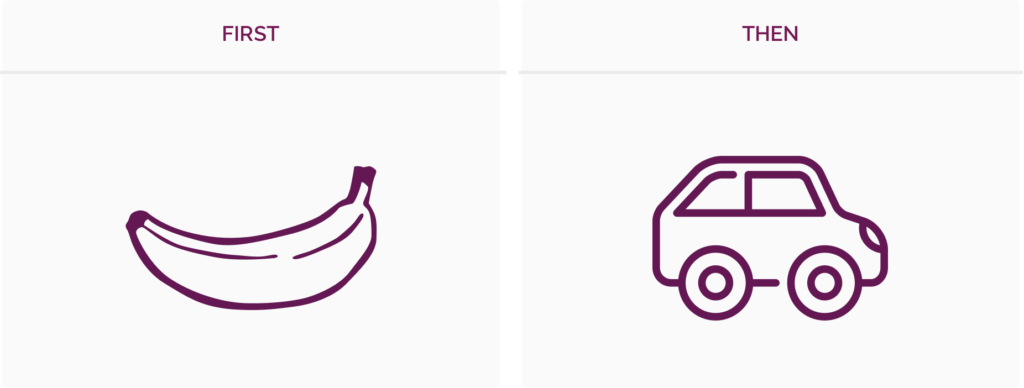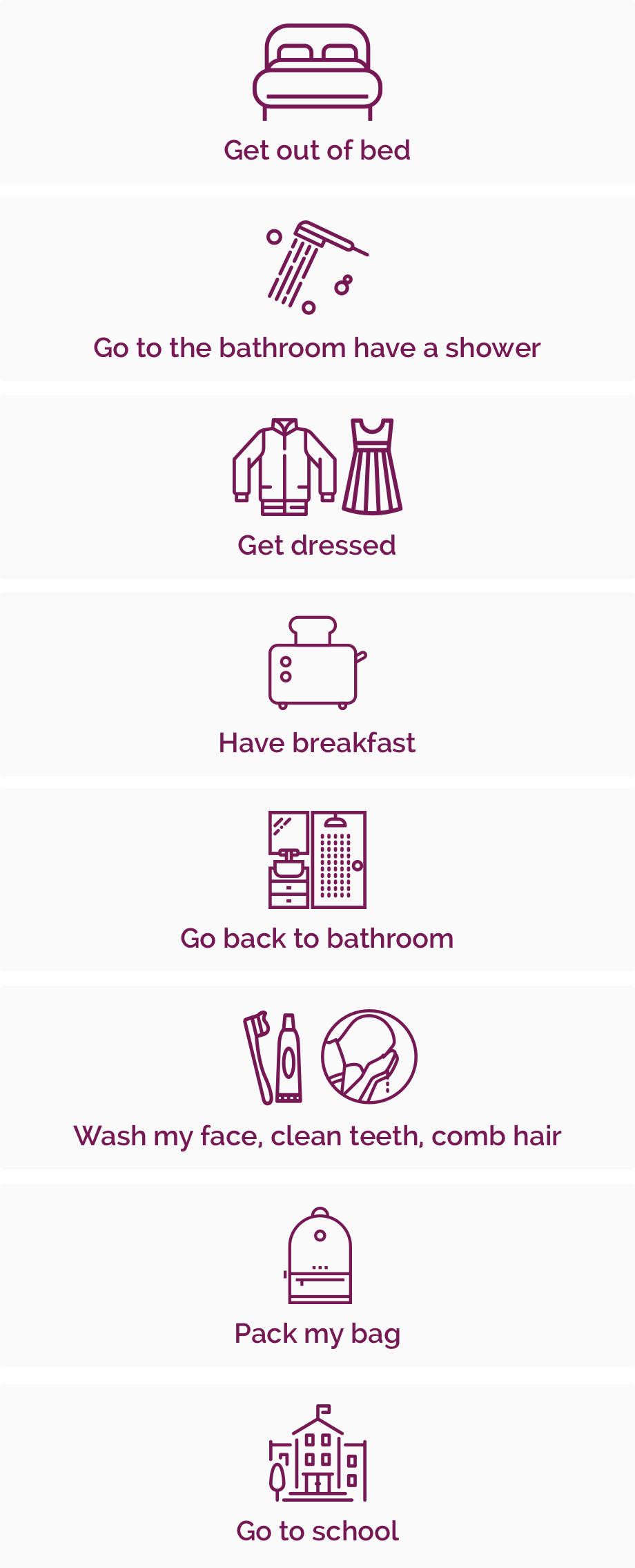The aim of creating and using a schedule is to provide a reminder of what is happening, which in turn allows a person to predict what will happen next. Often when we know what is going to happen next stress is reduced and this can avoid behavioural and anxiety issues. Schedules can take various forms, they can be visual or written, they can be paper based or contained within a technology device.
Schedules can be as simple as ‘first, then’ or can list activities for a session or an entire day.
When using a ‘first, then’ schedule you are teaching your child to follow instructions and setting expectations of what is required. For example ‘first eat some fruit and then play with a toy’ or ‘first reading then the ipad.’ Depending on what visual prompt your child may need you can use an object, a photo, a pictograph and or the written word in each of the boxes.

A schedule for your child’s morning routine will need to be individualised according to how you manage your household. The below can be used as a guide to get your child to focus on what needs to be done in a particular order for them to function effectively each morning. You will need to adjust this for weekends and holidays. It is important to keep a schedule going during these times to assist your child to manage their day.
